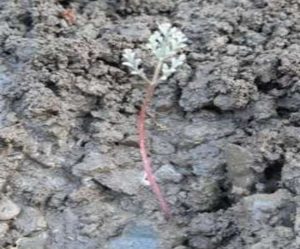Carrots are one of the most popular and versatile vegetables, loved for their sweet flavor, vibrant color, and numerous health benefits. Whether you are a seasoned farmer or a gardening enthusiast looking to try your hand at cultivating carrots, this comprehensive guide will provide you with all the essential information needed to successfully grow this nutritious root vegetable. From selecting the right carrot variety and preparing the soil to caring for your crop and harvesting it, we’ll cover every step of the process. So let’s dive into the world of carrot farming and unlock the secrets to growing a bountiful harvest!
Choosing the Right Carrot Variety
Before you start farming carrots, it’s crucial to select the right variety suited to your climate, soil type, and intended use. Carrots come in various shapes, sizes, and colors, including orange, purple, white, and yellow. Some popular carrot varieties include Nantes, Danvers, Chantenay, and Imperator. Each variety has its unique characteristics and growth requirements, so take the time to research and choose the best fit for your farm or garden.
Preparing the Soil
Carrots thrive in well-drained, loose, and fertile soil. Before planting, ensure the soil is free from rocks, debris, and hard clumps. Remove any weeds and work the soil to a depth of at least 12 inches. Adding organic matter, such as compost or well-rotted manure, can improve soil structure, fertility, and water retention. Conduct a soil test to determine the pH level and nutrient content, making necessary adjustments to create an optimal growing environment for carrots.
Planting Carrot Seeds
Carrot seeds are tiny and require careful handling during planting. Sow the seeds directly into the prepared soil in rows or raised beds. For optimal results, space the seeds about one inch apart and half an inch deep. Ensure the soil remains consistently moist during germination, which typically takes 10-20 days. Thin the seedlings once they reach a few inches in height to allow ample space for proper root development.
Watering and Fertilizing
Carrots require consistent moisture throughout their growth cycle. Regular watering is essential, especially during dry spells. However, be cautious not to overwater, as excessive moisture can lead to root rot. A drip irrigation system is ideal for delivering water directly to the roots, minimizing water wastage. Additionally, supplement the soil with a balanced fertilizer, ensuring it provides adequate phosphorus and potassium to promote healthy root development.

Managing Pests and Diseases
Carrots are susceptible to various pests and diseases, including aphids, carrot rust flies, and fungal infections. Implementing preventive measures such as crop rotation, proper weed control, and using floating row covers can help protect your carrots from pests. In case of an infestation, consider using natural remedies or organic pesticides to minimize harm to beneficial insects and pollinators.
Thinning and Weeding
Thinning is an essential step in carrot farming, as it allows each plant enough space to grow large, straight roots. Once the seedlings are a couple of inches tall, thin them out, leaving the healthiest plants spaced at least two inches apart. Regular weeding is also necessary to prevent competition for nutrients and water, ensuring your carrots can grow undisturbed.
Mulching
Mulching around the carrot plants helps to retain moisture, suppress weeds, and maintain even soil temperatures. Organic mulches, such as straw or compost, work best for carrots. Apply a layer of mulch about two inches thick around the plants, taking care not to cover the carrot tops.
Protecting Carrots from Extreme Weather
Carrots can be sensitive to extreme temperatures. In hot climates, providing shade during the hottest parts of the day can prevent wilting and bolting. Similarly, in cold climates, using row covers or cold frames can extend the growing season and protect the crop from frost.
Harvesting Carrots
Carrots are usually ready for harvest 60 to 80 days after planting, depending on the variety. To harvest, gently loosen the soil around the carrots using a garden fork or spade. Carefully lift the carrots out of the ground, taking care not to damage the roots. Remove any excess soil, and store the carrots in a cool, dark place with high humidity to prolong their shelf life.
Conclusion
Farming carrots can be a rewarding experience, providing you with a delicious and nutritious harvest. By following the steps outlined in this ultimate guide, you can cultivate healthy, vibrant carrots that will add a burst of flavor to your dishes. Remember to select the right variety, prepare the soil properly, provide adequate care, and protect your crop from pests and extreme weather. Happy carrot farming!
Read more at-Kisansabha.in




